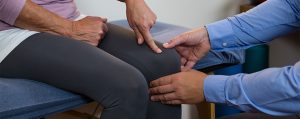7 Things New Athletic Trainers Should Know Entering the Field
Making the transition from student to certified athletic trainer (AT) is an exciting time, as you finally get to begin the journey of a new career. However, just like any other industry, it can be overwhelming to taking in all the details that come with the start of a new position.
The Common Cold: When Athletes Should & Should Not Train
It is estimated that the average adult has between 1 and 6 colds each year,1 but athletes who engage in heavy training and competition may suffer more frequent colds.2
Tips to Help Student Athletes Reach Peak Performance
The Spring sport season is right around the corner! With the start of a new sports team, the beginning of the season can be tough. Regardless of what sport is being played, there are many factors that can help student athletes have a great tryout and season, including the four tips outlined below.
Q&A: National Athletic Training Month 2017
Every March Athletico celebrates with the National Athletic Trainers Association National Athletic Training Month to recognize the important work of athletic trainers throughout our communities.
When Should You See Your Athletic Trainer?
Many athletes are familiar with the athletic trainers on their teams. These healthcare professionals are responsible for the prevention, rehabilitation and emergency care of musculoskeletal injuries and illnesses that impact people on the teams they work with.
US Soccer: Traveling with the U-17 MNT to Honduras
Athletico Athletic Trainer Tyler Harris had the opportunity to travel with the U-17 Men’s National Team (MNT) to San Pedro Sula, Honduras from February 24th – March 3rd. This was the team’s last international trip before World Cup qualifying begins in Panama this April.
5 Ways Athletic Trainers are Like Superheroes
Look out on the field! It’s a bird, it’s a plane… no, it’s an Athletic Trainer!
Okay, so maybe athletic trainers (ATs) can’t fly, but that doesn’t mean that they don’t have super powers! Just as Superman and Batman use their skills to save the day, ATs use their skills to protect and care for the athletes they work with. When someone is in trouble, ATs leap into immediate action.
5 Tips for the Aging Athlete – Body Changes
Research shows that as much as 50 percent of the declines in health due to aging are related to inactivity.5 Successful aging has been linked to genetics and a healthy lifestyle that consists of proper nutrition and exercise, but what about the aging athlete who isn’t a stranger to activity? What are some key considerations for seniors as their activity levels remain high, but their body’s physiologic response changes with age?
